Are you tired of replacing your pickleball paddle every few months? We feel your pain! We understand the importance of having a durable and long-lasting paddle. That’s why we’ve created the ultimate guide to paddle longevity. Let’s dive in and keep your paddle in top shape for longer!
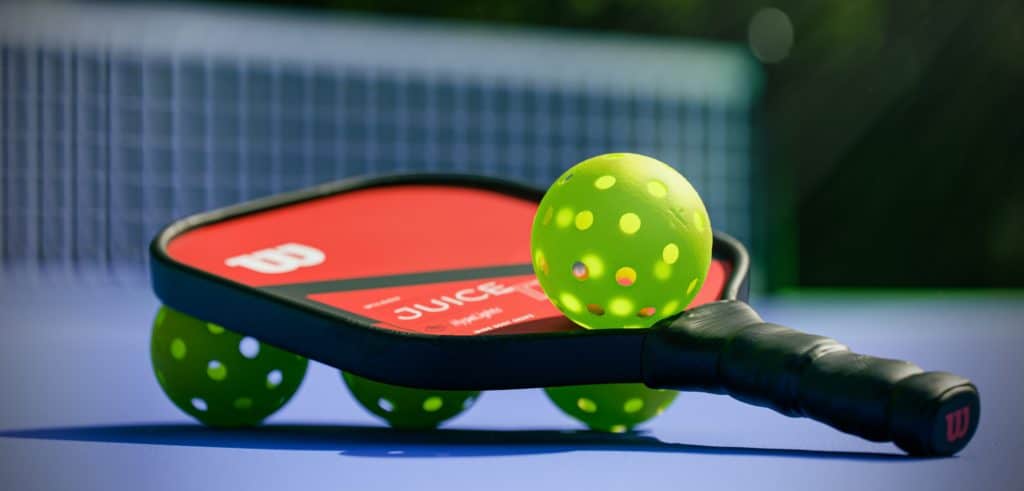
How Long Do Pickleball Paddles Last?
The average lifespan of a pickleball paddle ranges from 6 months to 3 years. It depends on factors such as paddle material, playing style, proper care, etc.
For beginners, their paddles can last longer since they are not as hard on their equipment as professional players. Professional players who play regularly or competitively may need to replace their paddle every 6 to 12 months.
Also when it comes to paddle material, graphite and composite paddles tend to last longer than wooden paddles.
But don’t worry; you can extend the life of your paddle by taking proper care of it.
The Top 5 Factors That Affect Lifespan of Your Pickleball Paddle
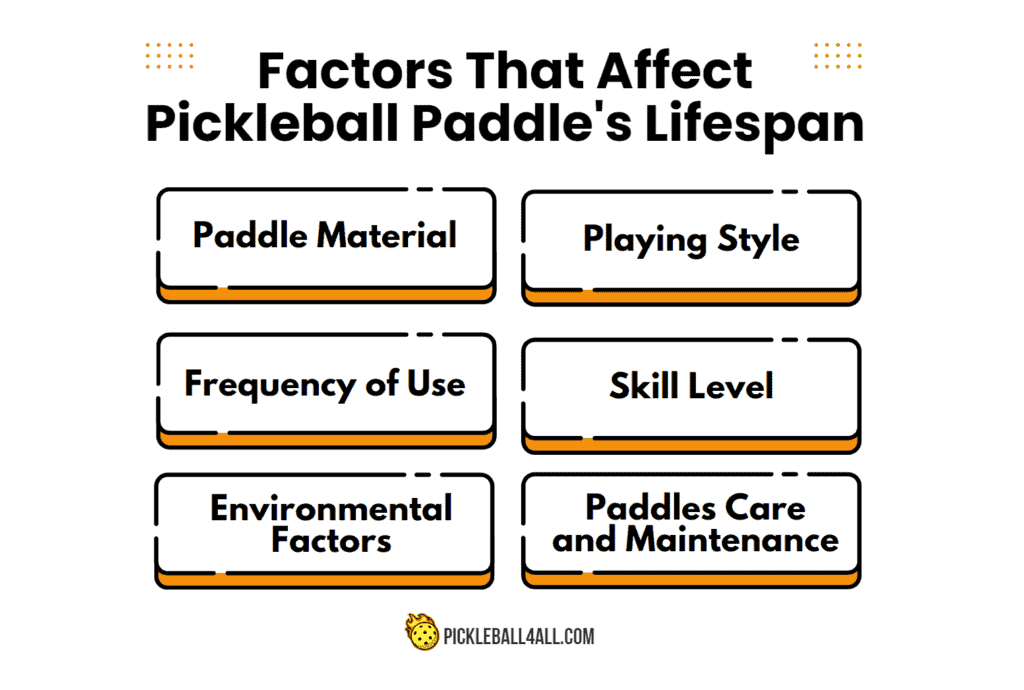
Battle of the Paddle Materials: Which One Lasts Longer?
When choosing a pickleball paddle, one of the most important factors to consider is the material it’s made of. Here’s a breakdown of the most common paddle materials and how they stack up in longevity.
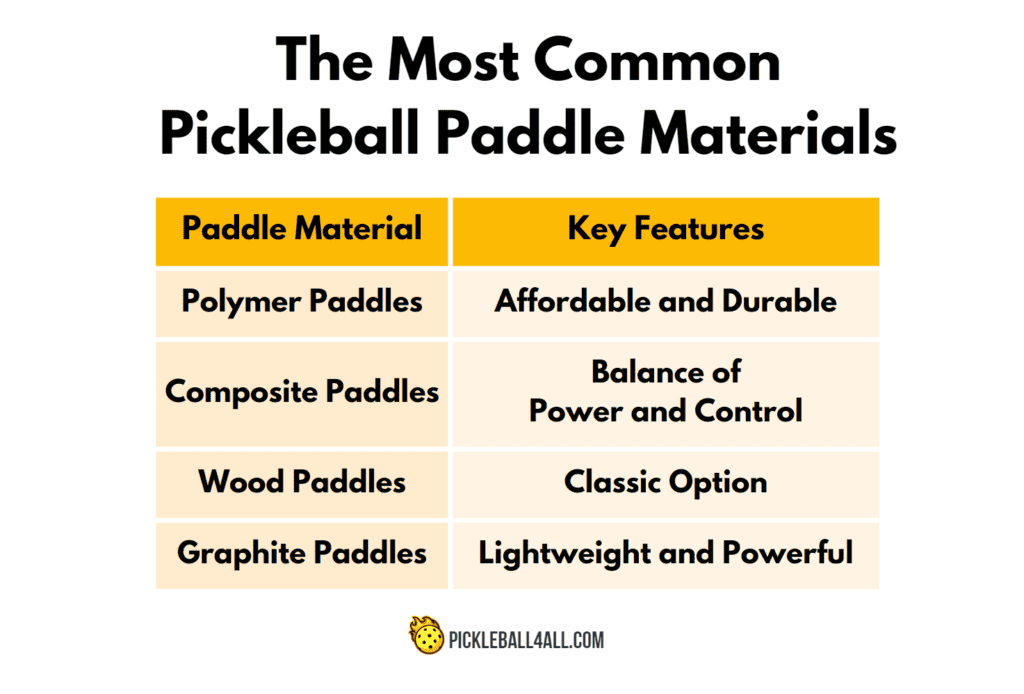
Polymer Paddles: Affordable and Durable
Polymer paddles are the most popular option for beginners and casual players due to their affordability and durability. They’re typically made from a blend of plastics, which makes them lightweight and easy to maneuver on the court. While they may not provide the same level of control or power as other materials, they’re a great option for those just starting out or on a budget.
✔ Tip. To extend the lifespan of your polymer paddle, be sure to clean it regularly with a damp cloth. Avoid using harsh chemicals or abrasive materials.
Composite Paddles: A Balance of Power and Control
Composite paddles are known for their excellent balance between power and control. It makes them a popular choice among intermediate to advanced players. But composite paddles can be more expensive than polymer paddles.
✔ Tip. Consider investing in a composite paddle if you’re looking for a more balanced playing experience. Be sure to store it in a protective case when not in use to prevent damage.
Wood Paddles: A Classic Option
Wood paddles are the original type of pickleball paddles and offer a classic look and feel. But wood paddles tend to be heavier and less durable than other materials.
✔ Tip. If you opt for wooden paddles, be sure to store them in a cool, dry place and avoid exposing them to extreme temperatures or moisture.
Graphite Paddles: Lightweight and Powerful
Graphite paddles are a popular choice among advanced players due to their lightweight design and excellent power and control. They’re typically more expensive than other materials.
✔ Tip. To keep your graphite paddle in top condition, be sure to store it in a protective case and avoid exposing it to hot sun or extreme cold.
The Verdict: Which Paddle Material Lasts the Longest?
When it comes to longevity, composite, and graphite paddles tend to outlast polymer and wood paddles. But with proper maintenance, any paddle can last for years.
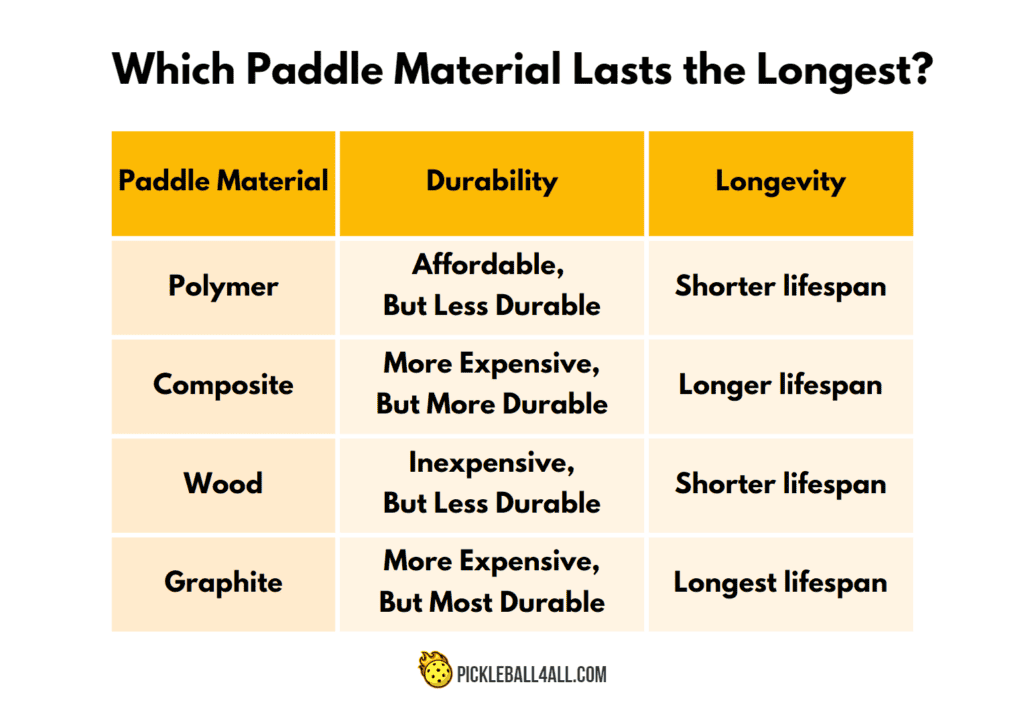
Frequency of Use and Pickleball Paddle Lifespan
The frequency of use is another significant factor that can impact your paddle’s lifespan. Here’s what you should keep in mind:
- The more frequently you play, the more wear and tear your paddle will experience.
- It’s essential to rotate multiple paddles if you play often. Using the same paddle repeatedly can cause it to wear out faster.
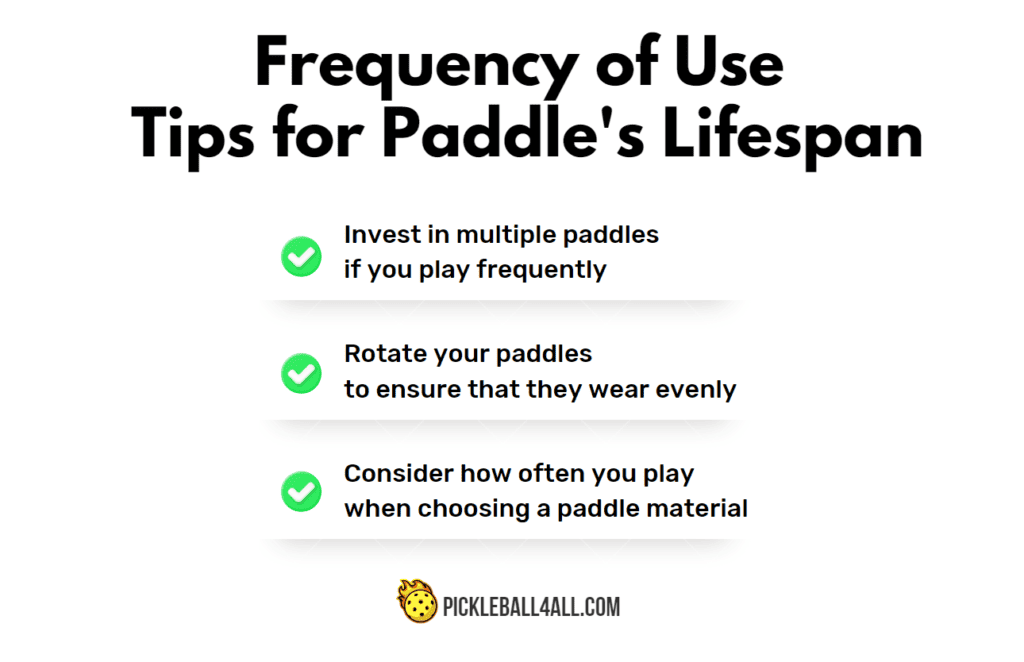
Impact of Playing Style and Skill Level on Paddle Lifespan
Your style of play and skill level can also impact your paddle’s lifespan. Here’s what you should know:
- If you’re an aggressive player who hits hard shots, your paddle may wear out more quickly than someone who plays a more finesse-based game.
- A professional player may wear out their paddles faster than a beginner because he tends to play more frequently and with more intensity.
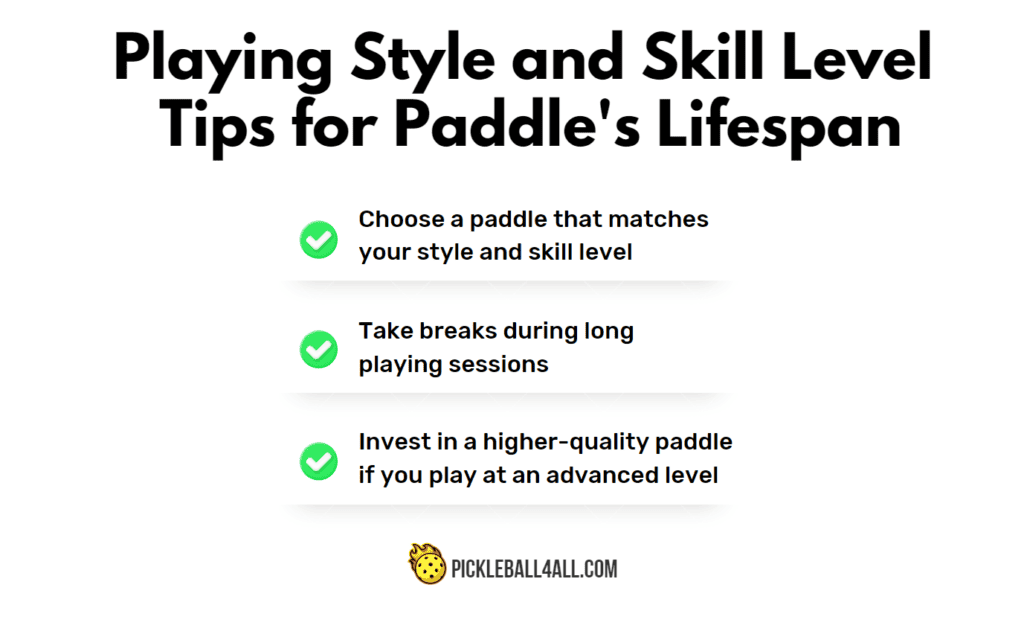
Environmental Factors Affecting Paddle Longevity
The environment in which you play pickleball can also impact your paddle’s lifespan. Here are some factors to keep in mind:
- Extreme temperatures and humidity can cause your paddle to warp or crack.
- Playing on rough surfaces, such as concrete, can cause your paddle to wear out faster.
- Storing your paddle in a damp or humid environment can lead to mold and mildew growth.
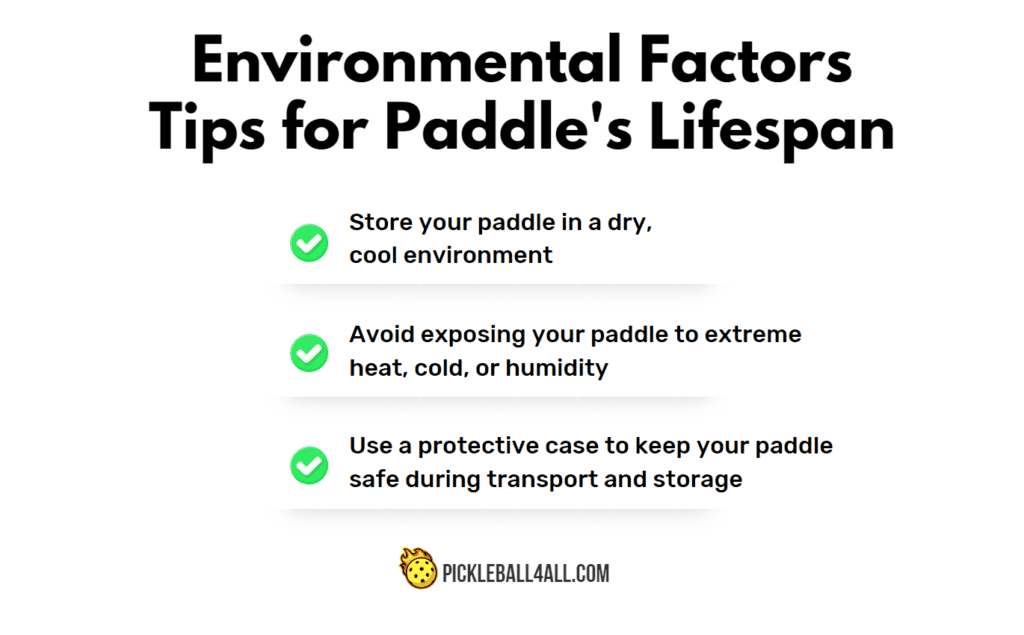
Pickleball Paddles Care and Maintenance
Improper care and maintenance of your pickleball paddle can lead to a number of consequences that can negatively impact your game.
Some of them:
- Decreased performance and control
- Warping or cracking of the paddle
- Discoloration or damage to the surface of the paddle
- Reduced lifespan of the paddle
To avoid these consequences and keep your paddle in top condition, it’s essential to take proper care of it. Stay tuned for the next part!
10 Expert Tips on How to Prolong the Life of Your Pickleball Paddle

Tip 1: Choosing a High Quality Paddle
Tip 2: Clean Regularly
Tip 3: Save From Extreme Weather
Tip 4: Appropriate Storage
Tip 5: Avoid Hitting Hard Surface
Tip 6: Grip Maintenance
Tip 7: Check for Wear and Tear
Tip 8: Light Clinking and Smart Playing
Tip 9: Avoid Over-Tightening Screws
Tip 10: Use a Dampener
Game Over: Signs It’s Time to Replace Your Pickleball Paddle
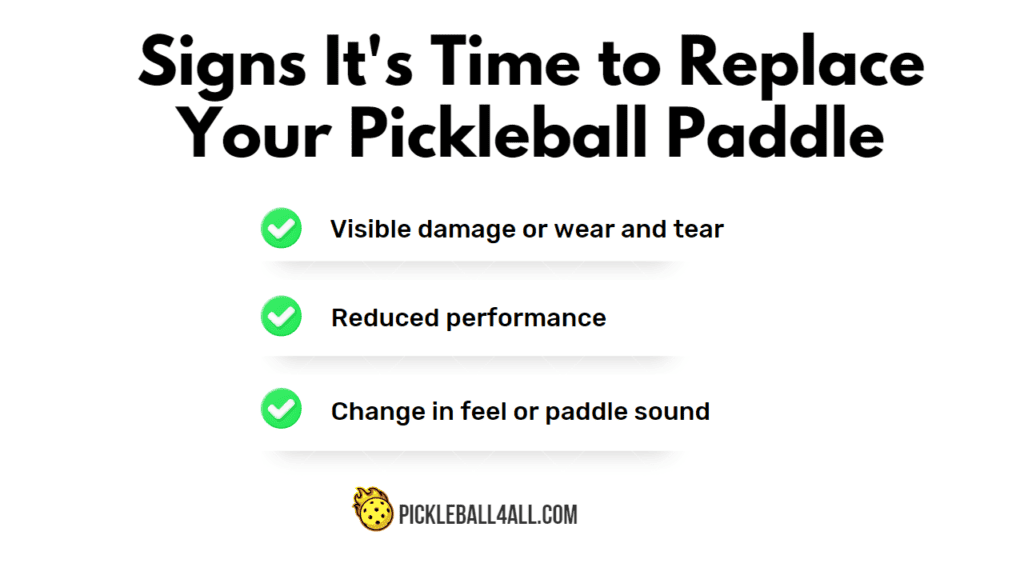
Visible damage or wear and tear
Over time, your pickleball paddles can accumulate scratches, dents, and other visible signs of overuse. While these may not always affect performance, they can make them more susceptible to damage.
Look out for the following visible damage:
Reduced performance
Look out for the following signs of reduced performance:
Change in feel or paddle sound
As you become more familiar with your paddles, you’ll develop a sense of their unique feel and sound. If you notice any changes, different sound, or any of these signs, it’s probably time to start shopping for new pickleball paddles.
Look out for the following changes:
How Often Should You Replace Your Pickleball Paddle?
Now that you know the signs to look out for, how often should you replace your pickleball paddle? While there’s no hard and fast rule, most players will need to replace their paddles every 1-3 years, depending on how often and intensely they play. If you’re a casual player who only plays a few times a month, your paddles may last closer to three years. But if you play several times a week, you may need to replace your paddles every year or even more often.
How Long Does a Pickleball Paddle Last? – Final Thoughts
We have covered the signs to look out for when it’s time to replace your paddles, as well as tips on how to maintain them. Remember to store your paddles properly, clean them after each use, and avoid exposing them to heat or cold temperatures.
In conclusion, catch our Trouble-Shooting Guide. It helps you diagnose common problems with your pickleball paddles and suggest possible solutions.
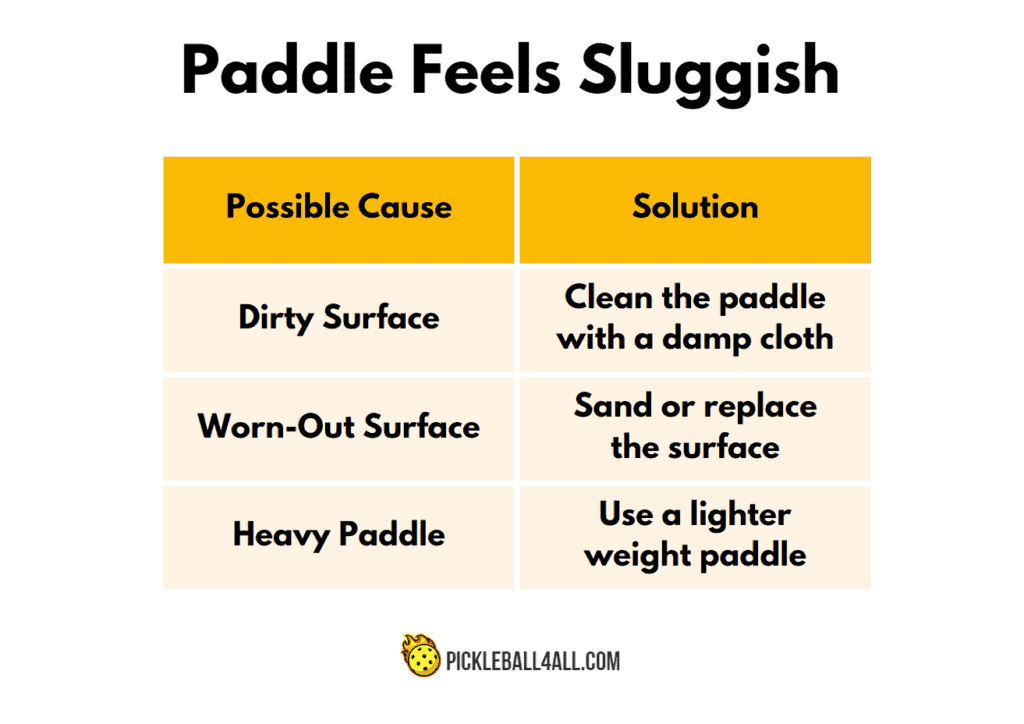
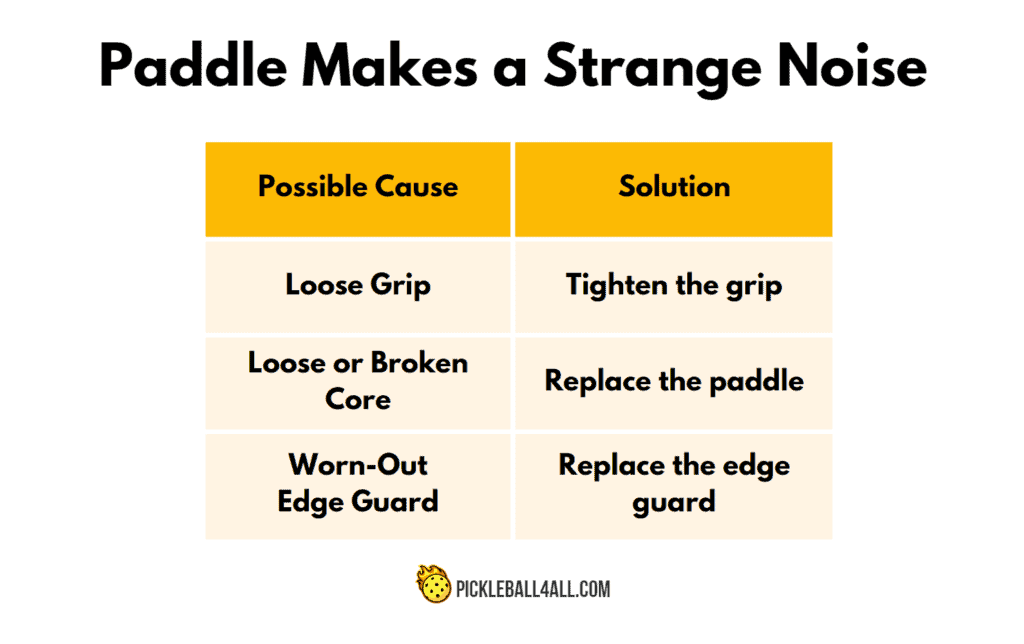
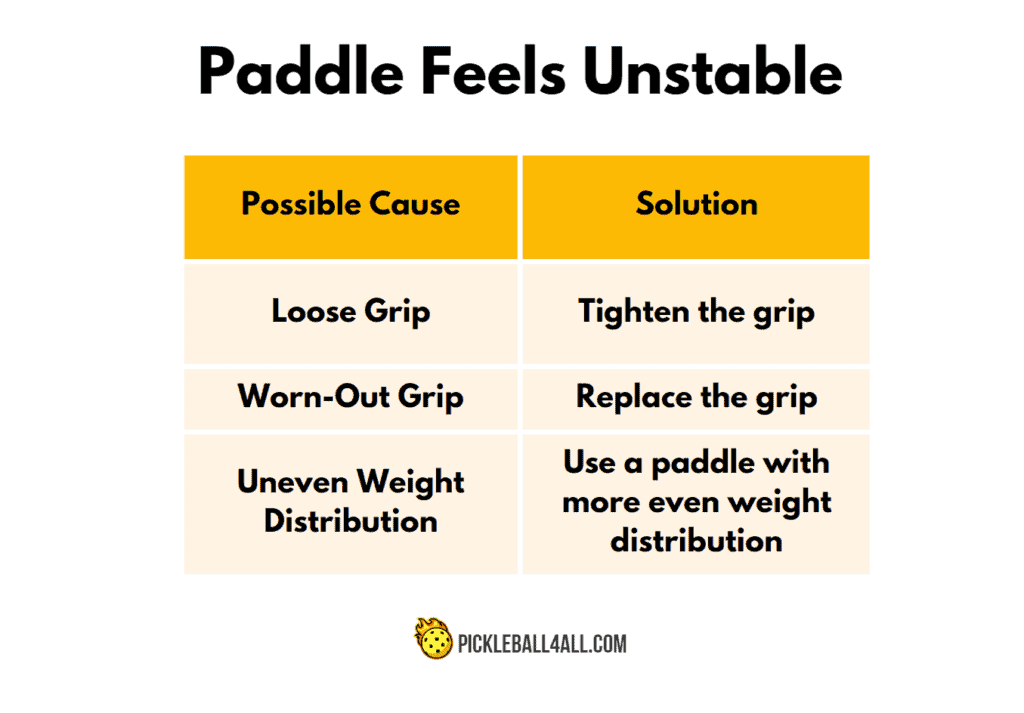
We hope this article has been helpful in answering your questions about pickleball paddles’ longevity. Don’t forget to share this article with fellow pickleball enthusiasts.
FAQ
How often should I clean my pickleball paddle?
It’s recommended to clean your pickleball paddles after each use. Use a damp cloth or sponge to wipe the surface of the paddles, and avoid using harsh chemicals or abrasive materials that could damage the surface.
Can I store my pickleball paddle in the car during hot weather?
It’s not recommended to store your pickleball paddles in a hot car. High temperatures can damage the paddle’s materials and reduce its performance. Instead, store your paddles in a cool, dry place when not in use.
When should I replace my pickleball paddle?
Look for signs of visible damage, reduced performance, or changes in feel or sound. If your paddles have cracks, chips, or other signs of pickleball paddles wear, it may be time to buy a new one. Additionally, if you’re experiencing a decrease in power or control during play, or notice changes in the sound or feel, it may be time for a new one.
How long does a graphite pickleball paddle last?
On average, well-maintained graphite paddles can last anywhere from 2 to 5 years.
How long does a Selkirk paddle last?
Selkirk is known for producing high-quality pickleball paddles that can last a long time with good care. On average, well-maintained Selkirk paddles can last anywhere from 3 to 7 years.
Why do some pickleball paddles wear out faster than others?
Paddles that are made with lower-quality materials or that are not maintained properly may wear out more quickly than higher-quality paddles that are well cared for.
Can I replace the edge guard on my pickleball paddle?
Yes, it is possible. Many manufacturers offer replacement edge guards that can be installed on the paddle. Also, you can take your paddle to a professional for pickleball paddle edge guard replacement. It is important to replace it as soon as it starts to show signs of overuse, as a damaged edge guard can cause further damage to the paddle itself.
How much do pickleball paddles cost?
The cost of a pickleball paddle can vary depending on the material, brand, and level of play. On average, a beginner-level paddle can cost $30 – $60, while mid-level paddles $60 – $100. Professional-level paddles can range from $100 to $200 or more.
How long does a pickleball paddle last?
The lifespan of a pickleball paddle depends primarily on the frequency of use and level of care. An average paddle lasts anywhere between 1 to 5 years in general. For casual pickleball players who only play occasionally, a paddle could last for several years. Conversely, frequent and competitive play can cause quicker wear and tear, reducing the paddle’s durability.
How can I help my paddle last longer?
Prolonged paddle lifespan is largely dependent on proper maintenance and care of your paddle. This includes using a paddle cover to protect the paddle’s face when not in use, avoiding extreme temperatures and not leaving the pickleball paddle outside after the completion of your pickleball game.
How do I know when my pickleball paddle is dead?
Signs that your pickleball paddle is dead or nearing its lifespan end include a noticeable lack of power or control during the game, visible wear and tear such as cracks or chips, or ‘dead spots’ in which the paddle loses its responsiveness.
